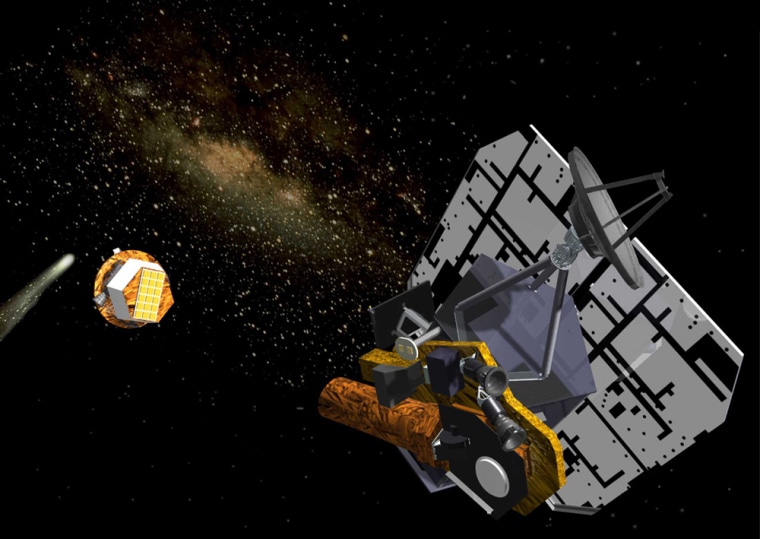A spacecraft that sent a projectile slamming into a comet will swing by Earth on New Year's Eve before starting a 2½-year journey to Comet Hartley 2.
Deep Impact will first spend six months using the larger of its two telescopes to search for Earth-sized planets around five candidate stars. The second part of its extended mission involves a flyby of Hartley 2 that allows close observations of the comet's features.
"It's exciting that we can send the Deep Impact spacecraft on a new mission that combines two totally independent science investigations, both of which can help us better understand how solar systems form and evolve," Michael A'Hearn, Deep Impact leader and University of Maryland astronomer, said in a statement about the spacecraft's new EPOXI mission.
NASA originally gave the go-ahead for the Deep Impact spacecraft to investigate Comet Boethin, but scientists eventually realized they could not identify the comet and its orbit in time to plan the mission flyby of Earth. The spacecraft will use the planet's pull of gravity to redirect itself toward Comet Hartley 2 on Dec. 31.
Deep Impact made history on July 4, 2005, when it smashed a probe into Comet Tempel. The resulting data differed greatly from what scientists found during two previous comet missions, Deep Space 1 and Stardust.
"One of the great surprises of comet explorations has been the wide diversity among the different cometary surfaces imaged to date," said A'Hearn. "We want a close look at Hartley 2 to see if the surprises of Tempel 1 are more common than we thought, or if Tempel 1 really is unusual."
The Deep Impact eXtended Investigation (DIXI) will follow up on those earlier findings not by smashing objects into Comet Hartley 2, but by mapping outbursts of gas from the comet surface, looking for water ice, and analyzing the cloud of gas and dust surrounding the comet.
However, the spacecraft will first focus on detecting alien worlds in the Extrasolar Planet Observations and Characterization (EPOCh) phase of its two-part mission, starting in late January.
Many extrasolar or alien planets normally remain hidden because of the glaring light from their stars. Deep Impact's telescope can detect planets by subtracting the light of a star alone from the combined light of both the star and its planet.
The mission will observe five nearby stars where large, Jupiterlike planets were already discovered. Deep Impact may detect neighboring planets by watching for any gravitational pulls on the known planets' orbits.
The total journey — running from Dec. 31, 2007 to the closest comet encounter on Oct. 11, 2010 — will be roughly 1.6 billion miles, or 18 times the distance from Earth to the sun. The spacecraft will need three trips around the sun before it can intercept Comet Hartley 2.
